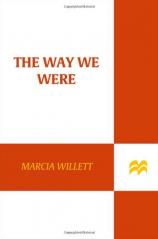The Way We Were
Review
The Way We Were
This absorbing family drama is told in alternating chapters from
the past and the present. It begins in 1976 as young pregnant Tiggy
drives to her friend's house in Bodmin Moor, a granite moorland in
remote Cornwall. While behind the wheel, she reflects on her
leave-taking with her grandmother, in which the older woman
insisted she take a bronze carving. The statue technically belongs
to Tiggy's father, a despicable man who has had no dealings with
Tiggy after remarrying and moving to France.
Tiggy has good reason to hope to never see her father again; her
only true family now is her grandmother. Still, she does not want
to distress her grandmother with the news of her still-concealable
pregnancy. Although they had a wedding planned, her fiancé
died in a mountain-climbing accident. To add to her heartbreak,
Tiggy has lost her job as a schoolteacher because of her pregnancy.
She is relieved when her friend Julia asks her to come stay with
her, insisting they can sort things out and make them right.
Tiggy's drive to Julia's house in Bodmin Moor is a long one. She
breaks it up by stopping to walk her dog and make tea in her van.
On the last leg of her journey, snow begins to fall, turning the
road treacherous. In a car accident that will echo and reverberate
throughout the book, her vehicle rams into a granite block.
Luckily, she is within walking distance of her destination. As her
friend welcomes her inside, Tiggy enters a true sanctuary. Over the
next several months she will feel as if she is part of a family, as
she confides in Julia and plays with Julia's children. The small
twins, Andy and Liv, and the baby Charlie are enthralled with the
newcomer, but they are even more excited about her van.
As winter turns to spring, and then summer (lovingly detailed by
the author in luscious descriptions that are sure to make readers
yearn to travel immediately to Bodmin Moor), Tiggy and Julia take
the children and dogs to ramble around the countryside in Tiggy's
van. Tiggy's fears and heartbreak are soothed by the comfort and
support offered to her by Julia and Julia's Aunt Em. Between the
two of them, Tiggy starts believing she will be able to lead a good
life with her baby. In fact, she has begun to dream at night that
she is with Julia, passing a baby girl named Claerwen to her ---
and that her fiancé, Tom, is with them, too. She is convinced
that she will have a daughter named, as in her dream, after her
grandmother.
While Tiggy's hopes and dreams vanquish the shadows in her life,
her stay with her friend is not without darkness. The malevolent
Angela, who constantly insinuates to Julia that she is involved
with Julia's husband, drops in to spread her brand of poison.
Puzzlingly, Tiggy finds Angela's little girl, Cat, almost more
repellant than her terrible mother.
We catch up with the family in the alternating chapters set in
2004. While the life and relationships of the adult Liv and the
rest of the family are interesting on their own, the bits and
pieces we gradually learn of the events from 1976 make this book a
page-turner that is nearly impossible to put down. Those long-ago
actions reverberate through to the story's conclusion, which comes
full circle in a most satisfying manner.
Fans of such authors as Joanna Trollope, Rosamunde Pilcher and
Maeve Binchy will adore THE WAY WE WERE (as well as Marcia
Willett’s other books). This excellent read is filled with
rich individuals bolstered by love, family and friendship while
dealing with secrets, guilt and lies.
Reviewed by Terry Miller Shannon (terryms2001@yahoo.com) on January 24, 2011
The Way We Were
- Publication Date: January 5, 2010
- Genres: Fiction
- Paperback: 304 pages
- Publisher: St. Martin's Griffin
- ISBN-10: 0312382898
- ISBN-13: 9780312382896





